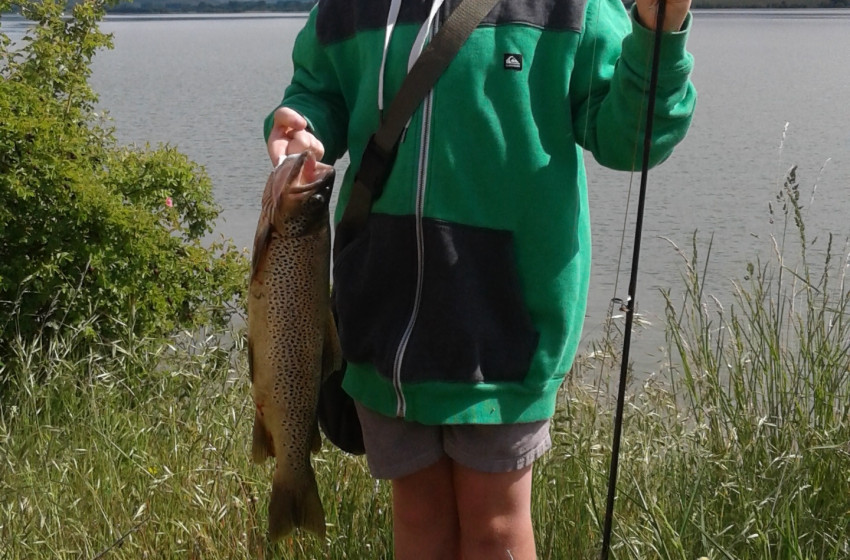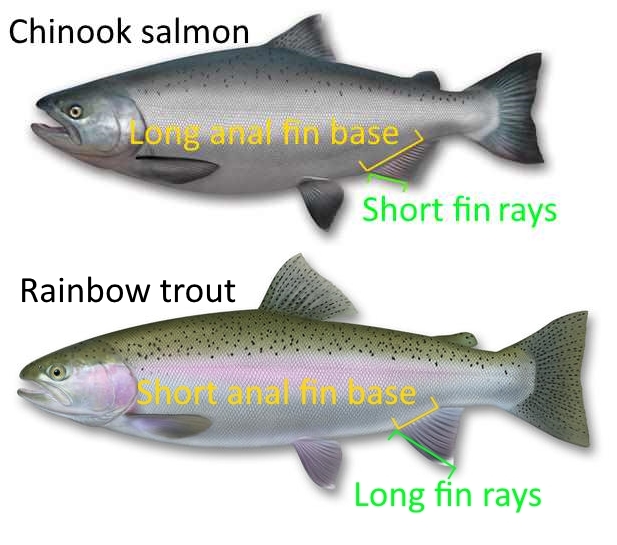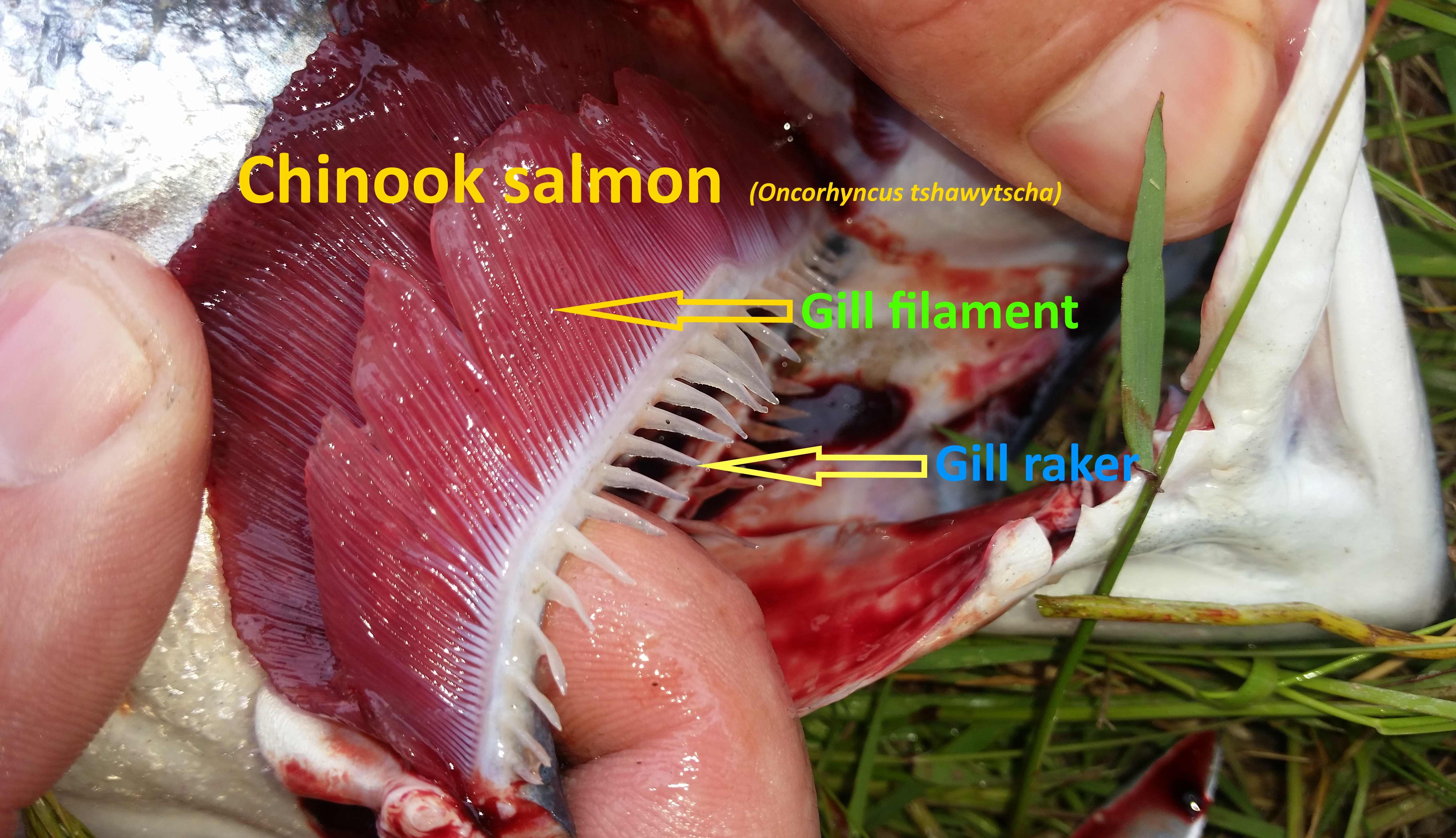Weekly Fishing Report – Central South Island Region – 23/11/18
- Central South Island
- 23/11/2018
- Richie Cosgrove

The region is saturated, and more rain is forecast for the weekend. Chances are, if you’re planning to fish a river or stream this weekend it will be hard to negotiate or simply unfishable due to high flows.
My advice is head to a lake or the canals and dress for rain.
The Ahuriri arm of Lake Benmore has been discoloured of late but reports are that you can still sight fish on the lake edges.
Above Right: Jack Gillespie (aged nine) with his brown trout caught in discoloured waters at the Ahuriri Arm, Lake Benmore - credit A Gillespie.
The canals have mainly been flowing clear and low (slow) over the past few weeks so all this rain and cold weather might change both those conditions.
It is about this time of year sea-run salmon anglers dust off their gear and make a start on the season, this is especially true for the Rangitata.
Surprisingly the Rangitata is at about 100 cumecs as I write this on Thursday afternoon, which is possibly fishable.
Last year, spin fishable flow was more like 70-80 cumecs. With all the rain forecast the Rangitata flows could bump up easily.
We have received a couple of reports of sea-run salmon being hooked and lost from the region over the week, however none landed.
On top of that catches of quality sea-run trout of all sizes have been received from some very happy anglers.
For fear of this information supply drying up I won’t mention the angler’s names or what river mouths they were fishing.
The Fish & Game kids salmon fishing day is done and dusted for another year at Loch Cameron, Twizel.
Thank you very much to the team at Mt Cook Alpine Salmon who generously gifted the salmon for the event.
178 youngsters attended and gave salmon fishing a go, around 40 fish were landed and many more lost in battle.
Spot prizes were generously donated by: Fish & Game, Jakes Hardware, Southern Alps Outdoors and Meridian Energy.
Most of the kids either went home with a fish for dinner or a spots prize to take on their next fishing adventure.
There are still a fair few salmon available to all sports fish licence holders in Loch Cameron.
I encourage you to take a child or Junior angler out fishing to Loch Cameron over the next few weeks while this opportunity lasts.
Please be aware that only Child licenceholders, aged 11 and under can bait fish at Loch Cameron.
Junior anglers age 12-17, and adult angler are restricted to fly and spin methods only.
Please refer to the 2018-2019 sports fishing regulation guide to ensure you are legal.
If you need clarification on the regulations feel free to call the office – 03 615 8400 or email csi@fishandgame.org.nz
Sockeye Fishing News - Part 2

Salmon vs trout I.D. tip - use the anal fin base-length and fin ray length to distinguish trout from salmon.
If you want to target sockeye salmon in our lakes, we suggest you start with Lake Benmore as it has a relatively large population and they often exceed the minimum size limit of 300mm.
Other Waitaki Lakes: Ohau, Pukaki, Aviemore and Waitaki do contain sockeye but as a sockeye fishery they don’t match Benmore.
Chinook salmon co-exist with sockeye and at a glance they are difficult to distinguish from each other.
Sockeye salmon gill rakers
On top of that, anglers new to sports fishing may struggle to tell the difference between a trout and salmon.
Trout and salmon Identification can be tricky, so I’ll try summarising the primary differences as noted in the various literature reviewed.
I know there are other differences, but I’ll just try keep it simple and provide the basic information that will enable you to identify sockeye salmon in Lake Benmore. Bear with me.
The shape of the anal fin is the best way to distinguish trout from salmon.
For salmon the anal fins are relatively long-based and have short rays, the longest ray being much shorter than the basal length of the fin.
For trout the anal fins are relatively short-based with long rays.

Chinook salmon gill rakers
To distinguish brown and rainbow trout my advice is to look for spots on the tail (caudal) fin.
Rainbow trout have defined spots all over the fin while brown trout usually have no spots or only a few faint ones near the top of the fin.
The best way to tell sockeye and chinook apart is by the count of the gill rakers.
What are gill rakers? gill rakers are bony or cartilaginous projections from the gill arch that are involved with suspension feeding tiny prey.
They are not to be confused with the gill filaments that compose the red fleshy part of the gill that connect to the rear side of the arch.
In simplified terms if the salmon has 30 or more gill rakers on their first (largest) gill arch it’s almost certainly a sockeye salmon.
Chinooks usually have less than 26 gill rakers.
The gill rakers of sockeye and chinook are different shape and feel too.
The sockeyes gill rakers are long and lean like half a tooth pick and are feathery. Chinook and trout gill rakers are shorter, ridged and tooth-like.
In terms of harvesting salmon in the CSI Region from water containing sockeye, it is important to note that the salmon daily bag limit for all relevant waters is 2 salmon (total), regardless of species, and there is a minimum size of 300mm.
I’ll continue the sockeye news section next week…
Tight lines
Rhys Adams, Central South Island Fish & Game Officer